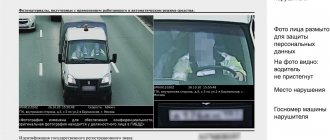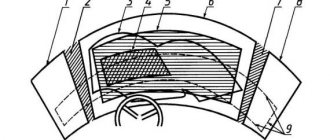What the traffic rules say about seat belts
Chapter 2 outlines the responsibilities of persons driving mechanical vehicles on public roads and regulates the issues of stopping vehicles for inspection and actions in case of an accident. A list of certification and permitting documents is presented, as well as requirements for ensuring safe transportation.
Paragraph 2.1.2 directly defines the mandatory use of seat belts when driving vehicles, both by the driver and all passengers. For two-wheeled vehicles - the presence of fastened helmets.
Passenger responsibilities are set forth in clause 5.1. Their presentation begins with the requirement of the unconditional use of seat belts, if available, and when riding a motorcycle, the use of protective helmets.
Traffic regulations for seat belts
In accordance with the requirements of paragraphs 2.1.2 and 5.1 of the traffic rules, the use of seat belts is mandatory for both the motorist and all his passengers. This legislative act defines a list of persons to whom this rule does not apply:
- Instructors who teach a student how to drive.
- Employees of operational services (provided that they are in a special vehicle).
The traffic rules specifically stipulate the procedure for transporting children in a car. After the innovations, transporting a child in the front seat is only possible using a car seat. And if a minor is sitting in the back seat, you can use standard seat belts. However, the design of conventional seat belts is designed for the transportation of adults, so it may be uncomfortable for a child, and in the event of an accident, he may receive additional damage due to improper placement of the fastener. Therefore, for such transportation, it is best to use special adapters, for example, boosters.
Most modern motorists do not see any practical benefit in a seat belt, using it only to avoid punishment and claims from the traffic police officer. If negative consequences in the form of a decision to prosecute have already occurred, car owners are looking for ways to appeal the document and not pay the fine.
In fact, by using a seat belt, you can minimize the consequences of a traffic accident. Despite the fact that this fixation device may cause additional damage to the body, in most cases it helps to avoid the death of a person at the time of an accident.
During a collision, the human body is directed forward by inertia. If the impact was strong, the driver or passenger may receive serious damage from a collision with parts of the car interior. In some cases, the accident ends with the unbelted person being thrown through the windshield. Using a seat belt will help avoid such unpleasant consequences of an accident and save lives.
Most motorists who refuse to use seat belts claim that their car has airbags. But the airbag can only work effectively if it interacts with the belts. If a person refuses to brace his body, he may suffer additional injuries as a result of a collision with a pillow (ejected under high pressure), even if the accident itself was not serious and could have ended without injuries.
Grounds for imposing a fine
It is not only the driver who has the obligation to use passive protection. A decision is made on an administrative penalty with a fine if a seat belt is not used:
- The driver or he is not fixed with a special device.
- Passengers, if they are provided for by the design of the vehicle.
- For children or, for the corresponding age group, with a mandatory additional seat, when the latter is not available.
Attention! How much a fine will be imposed for not fastening seat belts is determined for each case of violation separately.
Fines
What is the fine for not wearing a seat belt? Who will pay the fine for a rear seat passenger not wearing a seat belt? It is worth noting right away that not only the driver, but also all his fellow travelers who neglected safety in the company of the company, are subject to administrative “retribution” - a fine.
To the driver
What will be the amount (how much) of the traffic police fine for not wearing a seat belt? A driver caught without wearing a seatbelt must pay 1,000 rubles . The size does not depend on the number of persons in the vehicle. A bribe for this offense can be issued by different traffic police inspectors several times a day . This fact makes it possible for a careless driver who does not think about his safety to improve.
Front seat passenger
A passenger sitting in front who is not wearing a seat belt will also have to pay a small fine - 500 rubles . This applies not only to private cars, but also to public transport.
Rear seat passengers
The amount of the fine for an unregistered passenger does not depend on the location of his seat in the cabin. Therefore, the fine for not fastening a seat belt in the back seat will be 500 rubles.
For a child
The largest fine is imposed for transporting a child without a seat belt. It is equal to 3000 rubles
Some parents try to argue, arguing that a seat belt will protect their child on a par with special restraint devices. How to pick up? This is an erroneous judgment, since factory belts are not designed for the proportions of a child's body . Then you can use special regulators - adapters
Here you will find information about other fines for traffic violations.
Fines for not wearing a belt
The measure of responsibility is determined by the provisions of Art. 12.6 and 12.29 Code of Administrative Offences. The first prescribes a fine of one thousand rubles from the driver for not fastening their seat belts in 2021, and the second - from the passenger for violating their duties - 500 rubles or a warning.
When a fine is imposed for an unbelted child, several age groups and the conditions of the offense are taken into account:
- a child under seven years of age must be transported using a certified restraint device;
- from seven to twelve years of age, children can ride in the back seat in special seats or fastened with seat belts equipped with adapters;
- When children twelve years of age and older are in the car, general rules apply.
If the established procedure for transporting children is violated, the driver is responsible, and during organized group trips - the officials and legal entities that provided the vehicles. Article 12.23 of the Code of Administrative Offenses provides for fines of 3,000, 25,000 and 100,000 thousand rubles, respectively.
Advice! If traffic police officers did not video record the offense, it will not be possible to challenge the decision on this basis - for an administrative penalty, it is enough to reflect the event in the protocol.
In what cases can you challenge a fine for not wearing a seat belt?
Traffic rules oblige the driver of any car to wear a seat belt while driving and make sure that all his passengers are wearing them. This concerns everyone for their personal safety in the event of a traffic accident.
But this rule is often violated. If the driver and front passenger still use seat belts, then passengers in the rear seats ignore this requirement, especially if the car windows are tinted.
But it is passengers who are not wearing seat belts who are most often injured or killed in road accidents.
Today, traffic police inspectors are armed with a variety of video recording equipment, which, even in a tinted car, can easily identify violators in the rear seats of the car.
And if you are stopped by a traffic cop, then it will be impossible to prove to him that you were wearing a seat belt while driving.
For not wearing a seat belt, the driver will be punished with a fine of 1,000 rubles.
According to clause 12.29 of the Code of Administrative Offenses of the Russian Federation, the inspector can issue a fine for an unbelted passenger in the amount of 500 rubles. But to do this, he needs to draw up a report on the violator based on his civil passport. And there are cases when the passenger does not have this document. Then a protocol is drawn up against the driver, the fine will be 1000 rubles, regardless of how many people in the car were not wearing a seat belt.
Traffic cops pay special attention to children who are in a car without seat belts.
If a child under twelve years of age is not in a special child seat, the driver will receive a fine of 3,000 rubles, and for an unbelted child over 12 years of age, a fine of 1,000 rubles.
But any rule has its exceptions.
According to traffic regulations, instructors have the right not to wear seat belts during driving lessons, when a student and employees of operational services are driving: the Ministry of Emergency Situations, the Ministry of Internal Affairs, etc.
But you can still challenge a fine for not wearing a seat belt:
1. If the driver and passenger are not wearing seat belts in a standing or parked car, and the inspector charges them with a violation;
2. If the vehicle does not have seat belts (not provided by the manufacturer);
3. If the seat belts are broken and the driver is heading to the parking lot or to the service station;
4. If a traffic police officer insists that you were driving without a seat belt fastened, but cannot show you a video of the violation.
Dear readers!
I will be grateful for a “thumbs up” and a subscription to the channel if the article was useful to you.
Are rear seat passengers fined for not wearing seat belts?
There is a common belief that passengers in the rear seats do not have to wear seat belts – for example, in a taxi. This is not true. Paragraph 2.1.2 of the traffic rules applies to all persons in the cabin of a moving car, and therefore a protocol will be drawn up for each passenger.
The rear row is removed from the front airbags, protection is provided only by the backrest of the seat in front and the belt. In many cases, an unfastened “rear” passenger on the highway during an accident flies out into the windshield, and begins to receive injuries while still inside the cabin on the body of the car.
If a passenger in the back seat has ignored the requirement of the rules, then he will be punished under Article 12.5, where the fine for wearing a seat belt in 2021 provides for the amount of 500 rubles while simultaneously collecting 1000 rubles from the driver for failure to ensure the safe transportation of people.
Responsibility for broken belts
Driving a vehicle or transporting passengers with a non-functioning passive injury prevention system entails liability under Article 12.5 of the Code of Administrative Offenses. The fine for a broken seat belt in 2021 in Russia is 500 rubles. The same amount of sanctions awaits the driver if they were dismantled on his own initiative or when circumstances beyond his control arose, but were provided for by the design of the car.
It is important to know! If belts are ignored or malfunctioning, the deployment of airbags even in a minor accident increases the risk of injury - the body is not fixed, which makes the contact area between the person and the protective shell unpredictable. On many foreign-made cars, when the belt is disconnected, it simply does not work.
Who shouldn't wear a seat belt?
Many drivers believe that they do not have to wear a seat belt at all. Let us recall that previously, paragraph 2.1.2 of the traffic rules allowed driving a car without seat belts to three categories:
- car instructors with a student behind the wheel;
- employees of state fiscal and operational services when performing duties in special vehicles with appropriate cartographic markings and identification marks;
- drivers with disabilities.
In 2010, PP No. 316 amended the provisions of the traffic rules, including those relating to the wording of paragraph 2.1.1. In accordance with them, the part allowing individual drivers to drive without seat belts has been abolished. Today, all persons driving vehicles equipped with seat belts are required to comply with the provisions of Article 2.1.2 without exception.
Information about the consequences of violating the safety requirements of people in the car while driving, as well as what fine for not fastening a seat belt in 2021 is provided for by the provisions of the Code of Administrative Offenses, will allow the driver to once again assess the consequences of neglecting compliance with traffic rules.
How to challenge a seat belt ticket?
When can a fine be issued?
- the driver or passengers are not wearing seat belts;
- a child under 12 years of age is transported in violation of the rules.
- disagreement with the decision made;
- from a traffic police inspector who issued a fine for not wearing a seat belt;
- from the management of the specified employee;
- in front, the child can be transported in a specially equipped seat;
- issuance of a decision by an unauthorized person;
- the text of the document includes the name of the traffic police inspector who drew up the protocol on the violation, the details of the resolution that is being challenged, the essence of the alleged violation, the place where the protocol was drawn up, and the amount of the penalty;
- the essence of the application is stated - disagreement with the decision, testimony, lack of evidence for the alleged violation;
- if a decree on collection has been made, seek legal advice and determine how, based on the received protocol, to challenge the collection.
- A similar seat is used in the back or restraints are adjusted to suit the child.
- violations in the preparation of the protocol;
- lack of documentary evidence of the said violation.
- official registration, indication of the institution where the application is sent;
- indication of your full data - name, place of residence, telephone number;
- a demand is made to cancel the administrative penalty due to lack of grounds.
- in the district or regional road safety department;
- in the district court at the place of the recorded violation.
- demand the provision of documentary evidence of a violation, in their absence - refer to the absence of a violation;
- if the traffic police officer insists on a violation, demand the drawing up of a protocol and indicate in the explanation your disagreement due to the lack of evidence;
If such instructions are not followed, the traffic police inspector has the right to impose a fine. The driver has the right to challenge it within a ten-day period if he believes that there was no violation for not wearing safety equipment.
To challenge a fine for not fastening a seat belt, the driver asks the traffic police inspector for a copy of the protocol and the decision on the penalty. The grounds for appeal are determined by the following factors:
Contacting an experienced lawyer will help determine whether, on the basis of the protocol, it is permissible to challenge the fine issued for not wearing a seat belt. You can contact a specialist on our website.
The decision is being challenged with a completed application and a copy of the protocol:
Video recording cameras on Russian roads have recently become widespread. Their use is dictated by the need...
Compliance with traffic rules is the main responsibility of a car owner. Failure to comply with traffic regulations will result in penalties...
Today, you can be fined not only for speeding on the road, because the traffic police offense table is very...
Failure to comply with the rules is interpreted by the traffic police officer as a violation of the safety of oneself and passengers. Statistics show that not wearing a seat belt makes you two or more times more likely to be seriously injured in a crash.
In the second paragraph, it should be taken into account that the transportation of children takes place according to the following requirements:
A driver can avoid punishment for not wearing a seat belt by following a certain procedure:
The main criterion on the basis of which you can avoid a traffic police fine for not fastening your seat belt is the presence of documentary evidence. The driver can challenge the decision, citing the fact that he was wearing a seat belt while driving. Testimony from passengers is provided as evidence.
The main argument for the ban on this section of the road is the sign number 3.27 - stopping is prohibited. Signs...
No driver is immune from receiving a fine. At the same time, the reasons for the violation vary depending...
Many car owners are facing increased fines for non-payment of parking. Situations often arise when an attempt to pay...
Receiving a fine from a traffic police officer is not always justified. Situations often arise when the driver does not agree with the inspector’s instructions. The legislation gives him 10 days to challenge the protocol drawn up. However, such actions require a legal basis and compliance with a certain procedure.
Rules
To determine the basis for challenging a traffic police fine for not wearing a seat belt, you should refer to the traffic rules. They are prescribed by the driver's duties. Paragraph 2.1.2 of the traffic rules indicates that in a car equipped with appropriate safety equipment, the driver must be wearing a seat belt while driving. The same requirement applies to vehicle passengers.
The practice of using seat belts in our country is calculated solely to avoid claims from traffic police officers. Drivers are convinced that the rules of use apply only when driving on highways. In practice, however, this is not the case and traffic police officers issue fines for not wearing seat belts quite often.
The traffic police may issue a fine for not wearing a seat belt under the Code of Administrative Offenses in certain situations:
How to challenge a ticket for not wearing a seat belt?
Consulting a lawyer will also help in drawing up an application. In order to correctly challenge a formalized decision to sanction a person for not wearing a seat belt, you must adhere to the rules for drawing up an application :
A similar procedure is followed to challenge a fine sent based on video recording cameras. Errors and failures happen, and therefore the car number, make, and driver may be determined incorrectly.











